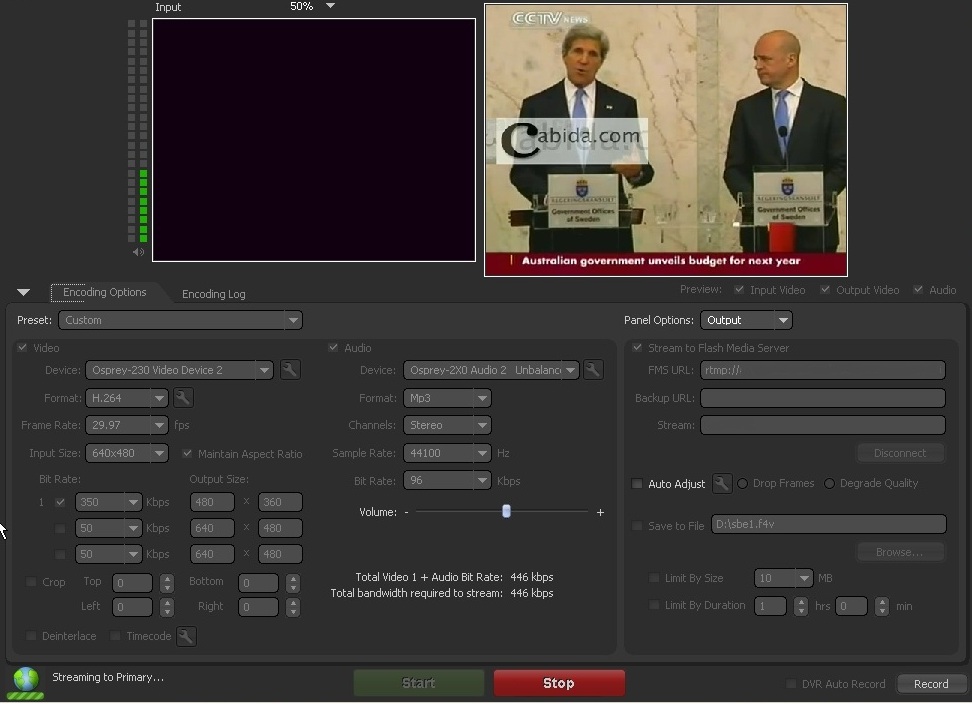| Minimal Firewall settings needed for
UPLOADING and VIEWING webcasts To broadcast/upload and watch streams you need the following stateful firewall rules, assuming you have a regular internet connection (if you are behind a corporate firewall ensure your IT department configured the firewall to these settings): •Outgoing UDP destination port 53 to your nameserver or any IP for domain name resolution (DNS) •Outgoing TCP destination port 80, 443 to any IP (WEB) •Outgoing TCP destination port 1935 to any IP = RTMP (to deliver the stream) |
|||||||||||||||||||||||||
|
|||||||||||||||||||||||||
| This is a screenshot of
common encoding parameters like those used for this page's Flash stream...note the "Total bandwidth required to stream" info - that's the upload speed required on-site to the server, whereas the "Bit Rate" is the bandwidth the Viewer needs to download the live stream. |
|||||||||||||||||||||||||

|
|||||||||||||||||||||||||
|
The flash player at the top of this page is embedded in an iframe which makes a call to a Flash server for the stream. Note that there are cross-browser differences when embedding iframes. (this page is usually optimized for Google Chrome) |
|||||||||||||||||||||||||